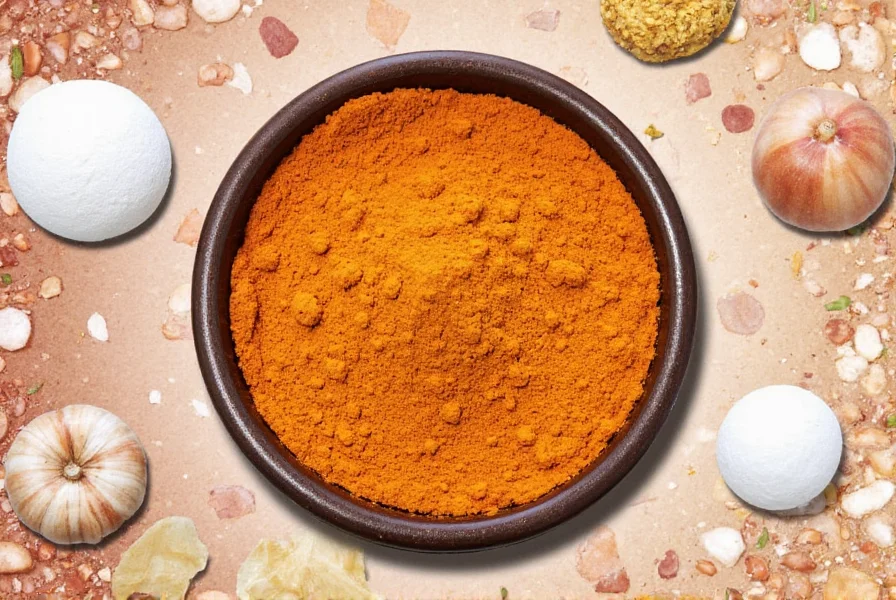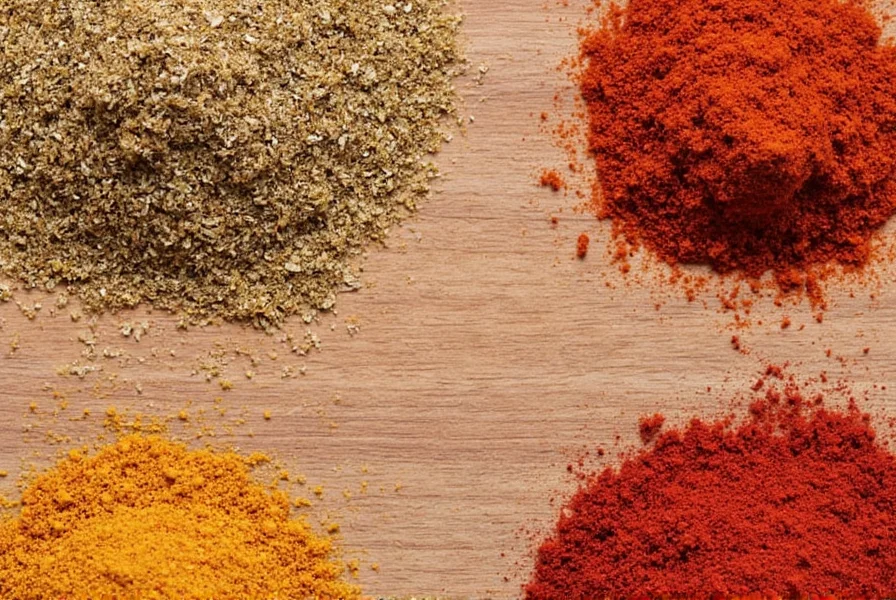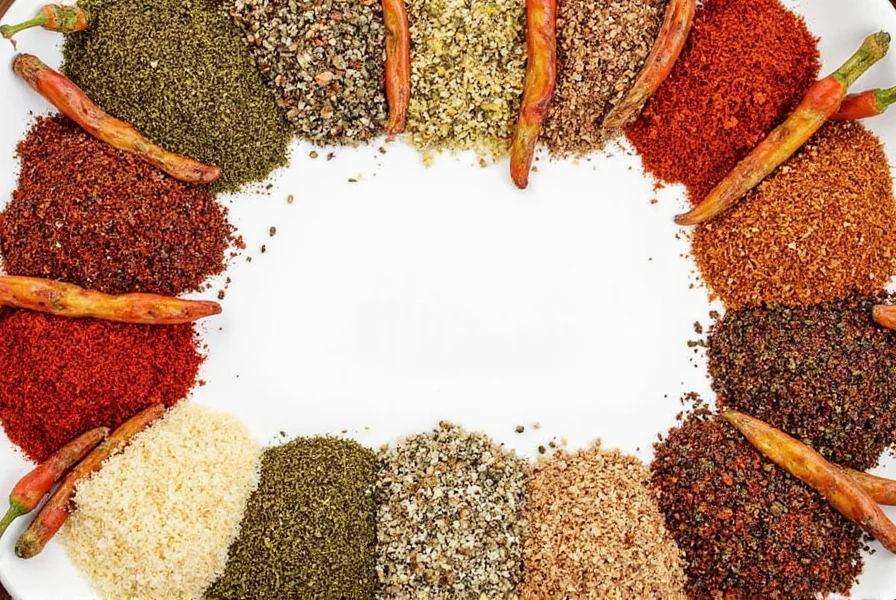If you're out of Kashmiri red chilli powder, the best substitute is paprika for color and mild heat. For more heat, add a pinch of cayenne. Below is a complete guide to the top 10 substitutes with detailed comparisons and expert usage tips for tandoori chicken, curries, biryani, and more.
| Substitute | Heat Level | Color Match | Flavor Profile | Best For |
|---|---|---|---|---|
| Paprika | Low | Excellent | Mild, sweet, smoky | Dishes needing color over heat |
| Ancho Chilli Powder | Medium-Low | Good | Earthy, slightly sweet | Mexican fusion dishes |
| Cayenne Pepper | High | Moderate | Sharp, fiery | Recipes where heat is preferred |
| Guajillo Chilli Powder | Medium | Good | Berry-like, tangy | Complex sauces and marinades |
| Devgad Chilli Powder | Low-Medium | Excellent | Smoky, fruity | Indian vegetarian dishes |
| Goan Khola Chilli Powder | Medium-High | Moderate | Spicy, bold | Vindaloos and coastal curries |
| California Wonder Bell Pepper Powder | Very Low | Excellent | Sweet, mild | Non-spicy color boosters |
| Chipotle Powder | Medium-High | Poor | Smoky, intense | Tacos, grilled meats |
| Crushed Red Pepper Flakes | Variable | Poor | Harsh, oily bite | Pizza, pasta, garnishing |
| Custom Blends (e.g., Paprika + Cayenne) | Adjustable | Adjustable | Varies | All-purpose use |

Why Kashmiri Chilli Powder Matters
Native to the Kashmir Valley, kashmiri lal mirch (as it's called in Hindi) is known for its vibrant red hue and subtle heat. Unlike other chilli powders, it doesn't overpower a dish with spiciness but rather adds warmth and a visual punch. It's a key ingredient in many North Indian and Pakistani recipes, especially those where color plays an important role — think tandoori chicken, rajma, and dum aloo.
Top 10 Kashmiri Chilli Powder Substitutes
Here's a list of ten potential replacements for Kashmiri red chilli powder, each with a quick profile to help you choose based on your recipe needs:

Buying Guide: Choosing the Right Substitute
Selecting a Kashmiri chilli powder alternative depends on several factors: heat tolerance, desired color, regional flavor compatibility, and availability. Below are tips to help you make an informed decision:
- Check the Heat Level: Use a Scoville scale reference to compare spiciness. Kashmiri chillies typically range between 1,000–2,000 SHU (Scoville Heat Units).
- Look for Color Intensity: Opt for spices with natural red pigments such as paprika or California bell pepper powder.
- Read Labels Carefully: Some commercial chilli powders contain fillers like flour or starch. Read the ingredients list to ensure purity.
- Buy Whole Dried Chilies When Possible: Grinding your own allows you to customize texture and potency.
- Experiment With Blends: Combine mild powders (like paprika) with small amounts of hotter ones (like cayenne) to mimic Kashmiri's flavor balance.
Use Cases & Pairing Tips
The right substitute also depends on how you plan to use it. Here are some pairing ideas and ideal uses:
For Tandoori Chicken or Biryani:
- Recommended: Paprika + a pinch of cayenne
- Why: Maintains rich color while adding just enough heat.
For Rajma or Dal:
- Recommended: Ancho chilli powder
- Why: Offers depth without burning out delicate legume flavors.
For Vindaloo or Coastal Curry:
- Recommended: Goan khola or guajillo powder
- Why: Brings the heat and tang needed for robust dishes.
For Grilled Vegetables or Roasted Potatoes:
- Recommended: Custom blend (paprika + smoked paprika + crushed black pepper)
- Why: Adds complexity and smokiness perfect for charred veggies.

Frequently Asked Questions
What is the closest substitute for Kashmiri red chilli powder?
Paprika is generally considered the closest substitute for Kashmiri red chilli powder, especially Hungarian or Spanish paprika. It provides the vibrant red color with mild heat. For a more authentic flavor profile, combine 1 tablespoon of paprika with 1/8 teaspoon of cayenne pepper to mimic Kashmiri chilli powder's balance of color and subtle heat.
Can I make my own Kashmiri chilli powder substitute?
Yes! The best homemade substitute is a blend of 2 tablespoons paprika + 1/2 teaspoon cumin powder + 1/4 teaspoon cayenne pepper. For a more complex flavor, add a pinch of garlic powder. This mixture replicates the color, mild heat, and earthy notes of authentic Kashmiri chilli powder.
What's the difference between Kashmiri chilli powder and regular chilli powder?
Kashmiri chilli powder is known for its deep red color and mild heat (1,000-2,000 SHU), while regular chilli powder (like cayenne) is much hotter (30,000-50,000 SHU) with less vibrant color. Kashmiri powder provides color without overwhelming heat, making it ideal for dishes where appearance matters as much as flavor.
How much substitute should I use for Kashmiri chilli powder?
When substituting, use equal amounts of paprika for color. If using hotter alternatives like cayenne, start with 1/4 to 1/2 the amount called for, then adjust to taste. For example, if a recipe calls for 1 tablespoon Kashmiri powder, use 1 tablespoon paprika OR 1/2 tablespoon paprika + 1/4 teaspoon cayenne for balanced heat.
Why is Kashmiri chilli powder special?
Kashmiri chilli powder is prized for its unique combination of vibrant red color, mild heat, and subtle earthy flavor. Unlike many other chilli powders that prioritize heat, Kashmiri powder enhances dishes visually without overwhelming the palate, making it essential for traditional dishes like tandoori chicken, biryani, and butter chicken.
Can I use paprika instead of Kashmiri chilli powder?
Absolutely. Sweet paprika is the best one-to-one substitute for Kashmiri chilli powder when you need the red color without significant heat. For dishes requiring some warmth, combine paprika with a small amount of cayenne (15 parts paprika to 1 part cayenne) to better replicate Kashmiri's flavor profile.
What gives Kashmiri chilli powder its distinctive red color?
The vibrant red color comes from natural pigments called capsanthin and capsorubin, which are more concentrated in Kashmiri chillies than in most other varieties. These pigments provide intense color without requiring artificial dyes, making Kashmiri powder a natural coloring agent in many Indian dishes.
Is Kashmiri chilli powder very spicy?
No, Kashmiri chilli powder is actually quite mild compared to other chilli powders. It measures between 1,000-2,000 on the Scoville scale, making it milder than jalapeños (2,500-8,000 SHU). Its heat is subtle and warm rather than fiery, which is why it's used in dishes where heat isn't the primary focus.
Where can I buy Kashmiri chilli powder substitutes?
Paprika is widely available in most supermarkets. For more authentic substitutes, check Indian grocery stores for Devgad chilli powder or Goan khola chilli powder. Online retailers like Amazon, specialty spice websites, and international food stores often carry Kashmiri chilli powder or suitable alternatives.
Can I use regular chilli powder instead of Kashmiri?
You can, but with caution. Regular chilli powder (like cayenne) is significantly hotter. If substituting, use only 1/4 to 1/3 of the amount called for, and consider mixing with paprika to maintain color. Better alternatives include ancho chilli powder or a custom blend of paprika with a touch of cayenne for balanced results.
Final Thoughts: Embrace the Spice Swap!
You don't have to compromise on flavor just because Kashmiri red chilli powder isn't within reach. Whether you're a seasoned chef or a curious home cook, there's always room for experimentation in the kitchen. Each substitute has its own personality — and sometimes, that twist can lead to something unexpectedly delicious.
So go ahead — open that spice cabinet, mix things up, and let your taste buds guide the way. After all, every great recipe starts with a little adventure!










 浙公网安备
33010002000092号
浙公网安备
33010002000092号 浙B2-20120091-4
浙B2-20120091-4